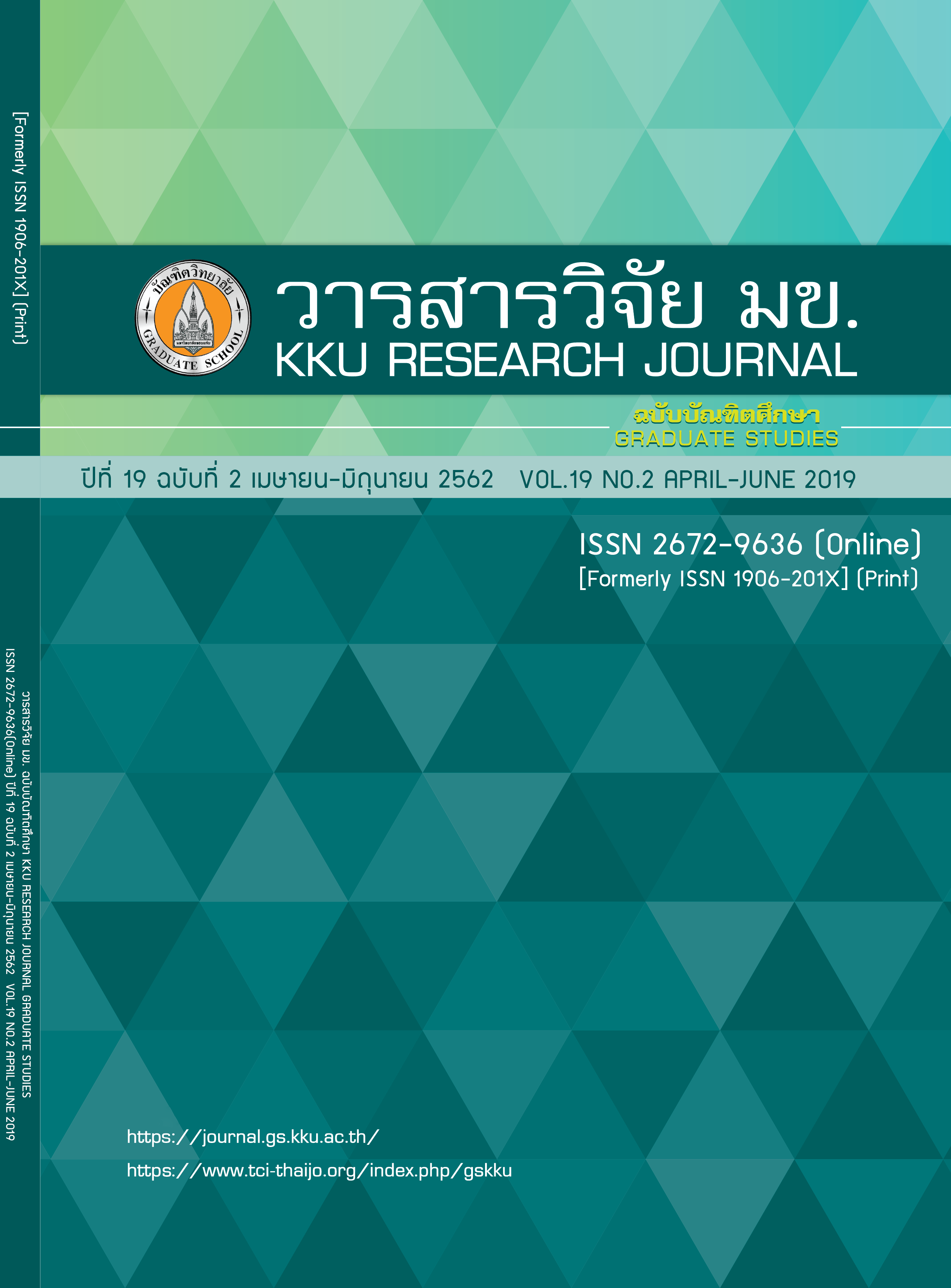Using Predicting Analytics to Determine Discharge Status and Mortality in Sepsis and Septic Shock Patients based on Surgery and Medical Procedures
Keywords:
Sepsis, Septic shock, Data miningAbstract
Sepsis and Septic shock are the major health problems that affect the mortality rates of patients in Global, including Thailand, proven by 62-74 patients increase every year. Ratchaburi Hospital, one of the largest government hospital in the Central region of Thailand, has sepsis and septic shock patients approximately 1,339 cases per year. This research proposes the data mining application to build the prediction model for survival and discharge status of sepsis and septic shock patients. The study is scoped to the sepsis and septic shock patient information obtained from Ratchaburi hospital during 2012-2016. Five prediction methods, which are Naive Bayes, Logistic Regression, Deep learning, Decision tree and Gradient Boosted Trees, were experimented and compared for finding the highest performance and most appropriate model. The results showed that although the Gradient Boosted Trees is the highest performance, the Decision Tree is the most appropriate model due to its interpretability and easy-to-communicate to the medical personnel. Moreover, its performance is slightly different between Gradient Boosted Trees. Finally, the produced decision rules could facilitate and support the decision making for medical personnel.
References
2. Sepsis and Organ Failure Definitions and Guidelines. Critical Care Medicine. 1993; 21(10):1612-1613.
3. Torio CM, Andrews RM. National Inpatient Hospital Costs: The Most Expensive Conditions by Payer, 2011. HCUP Statistical Brief #160. 2013.
4. Pipatwesh K. Factors affecting the mortality rate of sepsis patients in Uttaradit Hospital. Thai Journal of Tuberculosis Chest Diseases and Critical Care. 2008; 29:135-144. Thai.
5. Chuesakoolvanich K. Septic death in adults at Surin Hospital: an investigation of real-life clinical practice vs. empirical guidelines. J Med Assoc Thai. 2007; 90:2039-2046. Thai.
6. The National Healthcare Quality Report, 2005. AHRQ. 2005.
7. Vogel TR, Dombrovskiy VY, Carson JL, Graham AM, Lowry SF. Postoperative Sepsis in the United States. Annals of Surgery. 2010; 252(6):1065–1071.
8. Su L-X, Meng K, Zhang X, Wang H-J, Yan P, Jia Y-H, et al. Diagnosing Ventilator-Associated Pneumonia in Critically Ill Patients With Sepsis. American Journal of Critical Care. 2012; 21(6):110–119.
9. Patel SB, Yadav PK, Shukla DP. Predict the Diagnosis of Heart Disease Patients Using Classification Mining Techniques. IOSR Journal of Agriculture and Veterinary Science. 2013; 4(2):61–64.
10. Han J, Pei J, Kamber M. Data Mining: Concepts and Techniques. 3rd ed. San Francisco: Elsevier Science & Technology; 2017.
11. Palaniappan S, Awang R. Intelligent heart disease prediction system using data mining techniques. IJCSNS International Journal of Computer Science and Network Security. 2008; 8(8):343-350
12. Jonggasikit NN. A Decision Support System for Analyzing the Risk of Two Chronic Diseases: Diabetes Mellitus and Hypertension. Industrial Technology Lampang Rajabhat University Journal. 2016; 9:11-19. Thai.
13. Shearer C. The CRISP-DM Model: The New Blueprint for Data Mining. Journal of Data Warehousing. 2000; 5(4).
14. Rajchaburi Hospital. History of Rajchaburi Hospital [Internet]. History of Rajchaburi Hospital; 2016 [cited 2018 Apr 15]. Available from: http://bit.do/rajburihospital. Thai.
15. Kitsirikul B. Research of Sub-Project No.7 Report. Data mining algorithm. 2003. Thai
16. Hosmer DW, Lemeshow S, Sturdivant RX. Applied logistic regression. 3rd ed. Hoboken: Wiley; 2013.
17. Deng L, Yu D. Deep learning: methods and applications. Boston: Now; 2014.
18. Wongprachanukul N. A proper method for decision tree pruning in scientific data mining. Nakornratchasima, Suranaree University of Technology; 2005. 118p. Thai.
19. Windeatt T, Ardeshir G. Boosted Tree Ensembles for Solving Multiclass Problems. Multiple Classifier Systems Lecture Notes in Computer Science. 2002; 2364: 42–51.
20. Fogel D. An introduction to simulated evolutionary optimization. IEEE Transactions on Neural Networks. 1994; 5(1):3–14.
21. Devijver PA, Kittler J. Pattern recognition: a statistical approach. Prentice-Hall, London; 1982.
22. Brodersen J, Schwartz LM, Heneghan C, O'Sullivan JW, Aronson JK, Woloshin S. Overdiagnosis: what it is and what it isn't. BMJ Evid Based Med. 2018; 23(1):1–3.
23. Delong ER, Delong DM, Clarke-Pearson DL. Comparing the Areas under Two or More Correlated Receiver Operating Characteristic Curves: A Nonparametric Approach. Biometrics. 1988; 44(3):837–45.
24. Simon H. Neural networks: A comprehensive foundation. 2nd ed. New Delhi: Prentice-Hall of India; 2008.



